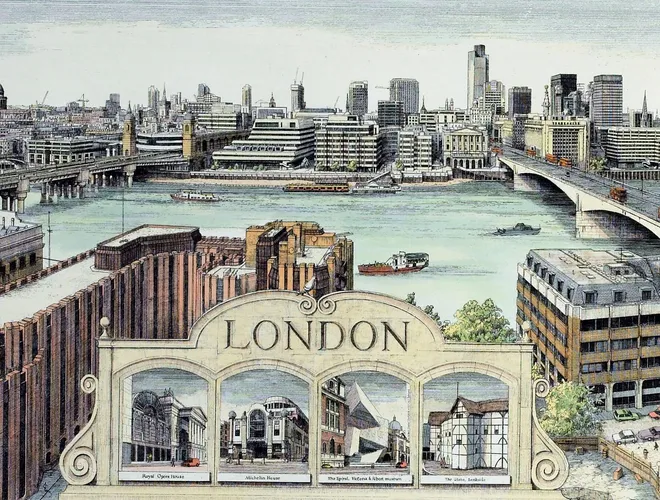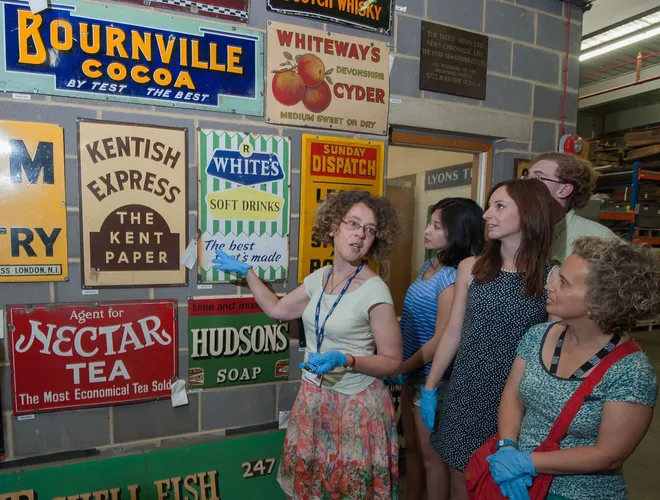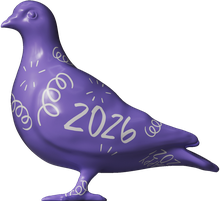History of our collections
London Museum’s diverse collections trace the rich history of London and its people, from archaeology to digital archives, chronicling the city’s evolving stories.

The royal family at the inauguration of London Museum at Kensington Palace in 1912.
The history of London Museum’s collections goes back a lot longer than the creation of the Museum of London by an act of Parliament in 1965. The museum’s collection was formed from those of two previous museums – the Guildhall Museum (1826), and the London Museum (1911). We continue to add to its collections to tell the stories of the nine million people who live in this city.
The beginning
Today’s London Museum was formed from the amalgamation of two earlier museums. They were merged in 1965 by the Museum of London Act, an act of Parliament that established what would become the Museum of London. In 2024, we have reinvented ourselves as London Museum.
The Guildhall Museum was the older of the two. It was established in 1826 to collect primarily archaeological finds from the square mile that forms the City of London. The London Museum was established in 1911 to tell the story of the whole of London. Its collections were always much broader, and encompassed clothing, decorative arts, vehicles, manuscripts, paintings and other material, inspired by the example of the Musée Carnavalet in Paris.
The creation of the museum
When the collections of both these museums were pooled in 1965, it was clear that the result was a collection that told a rich story of London’s history. But it was not comprehensive. The late 19th and 20th centuries were not well represented and the museum began to prioritise collecting from these periods. The museum was sector-leading in the 1970s, 80s and 90s in its approach towards collecting and representing the city’s diverse population and the history of immigration to London through projects such as The Peopling of London (1993–1994). The museum rapidly developed extensive collections of photography and oral histories.
The role of archaeology
The destruction of large areas of London during the Blitz in the Second World War created an opportunity for large-scale archaeological investigations. More recently, redevelopment schemes in London require an archaeological survey to determine whether a dig is necessary. The finds from most of these projects have come to London Museum and continue to be deposited at the Archaeological Archive. This means that the museum’s archaeological collections give an unparalleled level of data about London’s past.
Digital collections
The museum began to add digital material to its collections in 2012 when it collected around 6,000 tweets about the Olympic Games. The collecting of digital material has become normal across all areas of the collection. This enables us to capture social experiences that only exist online, such as WhatsApp threads during the Covid-19 pandemic.
Collecting today
The museum recognises the significance of collaborative, contemporary collecting to document the life experiences of under-represented communities. The Curating London project (2018–2023) was inspired by the lived experience of contemporary Londoners. The initiative emerged from the acknowledgement that the museum needed insight into the popular culture and everyday experience of local communities, especially those whose voices have often been marginalised.
Explore more
-

What we collect
The museum collects objects that help to tell the stories of this diverse, multicultural city of over nine million people
-

Managing our collections
Whether in storage, on display, being handled or moved, we follow best practices to keep our collections safe and accessible
-

Collections projects
Partnerships and collaboration with Londoners is at the heart of our work
-

Collections access & enquiries
We’d love to hear from you if you’d like to enquire about our collections


